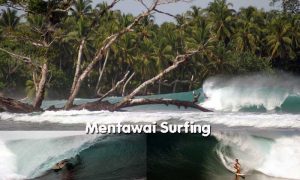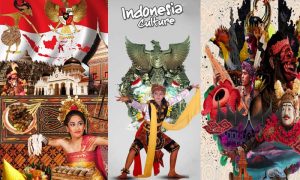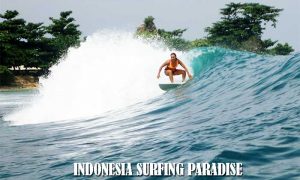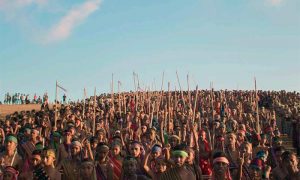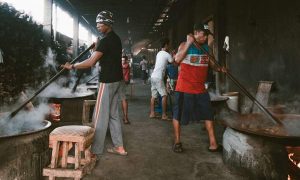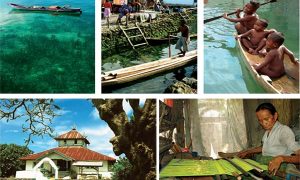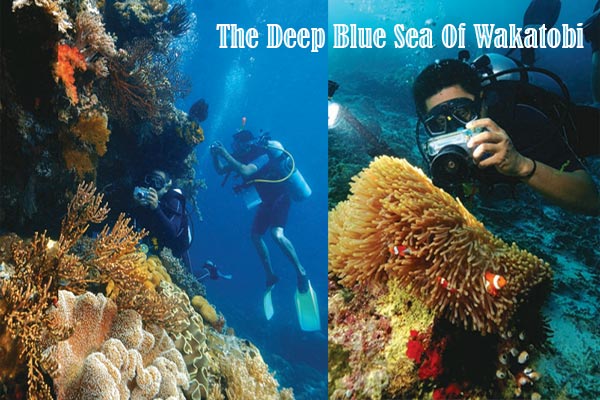
Snorkeling becomes a ‘must do’ activity when visiting Wakatobi in Southeast Sulawesi. Especially when you are not yet good in diving, snorkeling becomes an option.
Like what I did a while ago with some friends from Jakarta, during our visit to this island, which is the neighboring islands of Buton. No need for oxygen tubes, wetsuits, nor frog shoes. Simply geared up with snorkel goggles – a swimming goggle with a hose up – we can already enjoy the seabed “paradise”.
At Wakatobi, although only snorkeling, the scenery that can be enjoyed is no less beautiful than that when diving to the bottom. I can see the beautiful coral with various colors here and there. The anemone fish or clown fish are swimming in between the soft coral anemone, the place where they lived. Wakatobi is the paradise of the coral reefs. No wonder there are so many kinds of fish that live here.
Since a long time ago, Wakatobi which was before called the “Blacksmith” archipelago has been well-known with the area’s famous coral reefs and coral islands which widely cluster. The area reaches up to 90 thousand hectares, or about 1.5 times bigger than the size of the city of Jakarta! The Wallacea Operation even mentioned that Wakatobi has the biggest marine biota diversity in the world.
This British research institute recorded that there are 942 species of fish and 750 species of coral (from the 850 species that exist on earth) are living in this area. Compare it with the two other centers of coral reefs in the world, the Red Sea and Caribbean Sea. There are only 300 species of coral living in the Red Sea and there are only 50 species of coral living in the Caribbean Sea. Wakatobi is located in the area of the world’s famous coral triangle. Wakatobi is often called as the “center” or “heart” of the world’s coral triangle.
Not only that, in Wakatobi also lays the Kaledupa Atoll which is 48 kilometers long. This Atoll or group of coral island is the longest in the world. Since 1996, the government established this paradise for divers into Wakatobi National Park. The Wakatobi archipelago with a population of about 100 thousand people consists of four main islands. Wangi-Wangi, Kaledupa, Tomia and Binongko. The name Wakatobi itself is taken from the abbreviation of the four islands: Wa-Ka-To-Bi.
The Hoga Channel Wakatobi
The Hoga Channel, where we had fun snorkeling, is a diving site located between the island of Hoga and Kaledupa. Although not the main island, Hoga is one of the favorite places where local and international professional divers visit. The Marine Research Station run by Operation Wallacea is in this island. Diving season falls in March (short season), and from June to August is called the long season. In the long season hundreds of guests could be coming.
Those who stayed mostly are students from Europe or America. They can stay for weeks to examine the marine biota of Wakatobi. On this island filled with leafy trees there are approximately 200 standard wooden hotels with a rent of less than 100 thousand rupiahs per night per person. A cheap price for foreigners.
Besides Hoga Channel, there are 20 diving sites scattered in the waters of Wakatobi. Some of them become a favorite place among the divers. Near the Hoga Island lays the “Pinnacle” site. “Kaledupa Coral” diving site is in Kaledupa and the Let’s Drunk” diving site is in Tomia Island. Each site is unique. Kaledupa Coral for example, has the table coral (a coral with the shape of a table) with the size of 2-3 meters. This is rarely found in other diving sites.
However the most beautiful coral structure can be found in the Pinnacle site. In this site, the corals are mountainous, that is why it is called the Pinnacle or “peak.” This location is also the living place of the barracuda fish, which are rarely found in other places. This oval fish which is shaped similar to a bullet are considered to be one of the fastest sea animals. At the Pinnacle site, barracuda fish live in groups. The Hoga Channel is also unique. Here is where you can found a pygmy, a very small sea horse with a unique shape.
“Here the coral reefs are extremely beautiful, also the sea creatures,” said Nadine Chandrawinata, who was joining our group to explore the underwater beauty of Wakatobi at that time. According to the former Miss Indonesia who is a diving enthusiast, the underwater beauty of Wakatobi is nowhere else to be found.
The Deep Blue Sea Of Wakatobi, Southeast Sulawesi – Temporaktif

